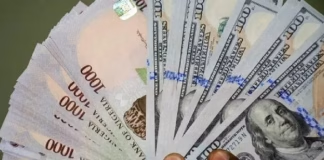Sterling pulled back from a one-month high on Monday hit largely on the back of a selloff in the dollar, with traders reluctant to take big positions on the pound until the conclusion of the Conservative Party leadership contest.
While a relatively less dovish Bank of England meeting last week provided some support to the British currency, its moves in recent days have been driven by developments elsewhere.
That is evident from the fact that while sterling briefly touched a one-month high against the dollar earlier this session, against the euro it remains only slightly above 5-month lows.
Two candidates are left in the contest to replace British Prime Minister Theresa May, with eurosceptic Boris Johnson by far the favourite to win a majority of votes from Conservative party members who will decide the next leader and prime minister.
A new leader is set to be elected by the end of July, leaving only a few months for any new prime minister to try and renegotiate a Brexit withdrawal agreement with Brussels before the Oct. 31 departure date. The European Union has said it will not reopen negotiations over the deal already agreed with May.
Johnson has cast himself as the only candidate who can deliver Brexit on Oct. 31 – with or without a deal – and investors worry his leadership will make an economically-damaging no-deal Brexit more probable.
Scotiabank analysts noted that CFTC positioning data released at the end of last week, which measures the positioning of speculative investors such as hedge funds, showed “net GBP shorts fell $563 billion”, although the market remains heavily short the pound versus the dollar and sentiment is bearish.
The pound fell 0.2% to $1.2726 after earlier touching $1.2766, a one-month high.
Against the euro sterling weakened 0.2% to 89.395 pence, not far from the 89.74 five-month low the British currency hit last week.















